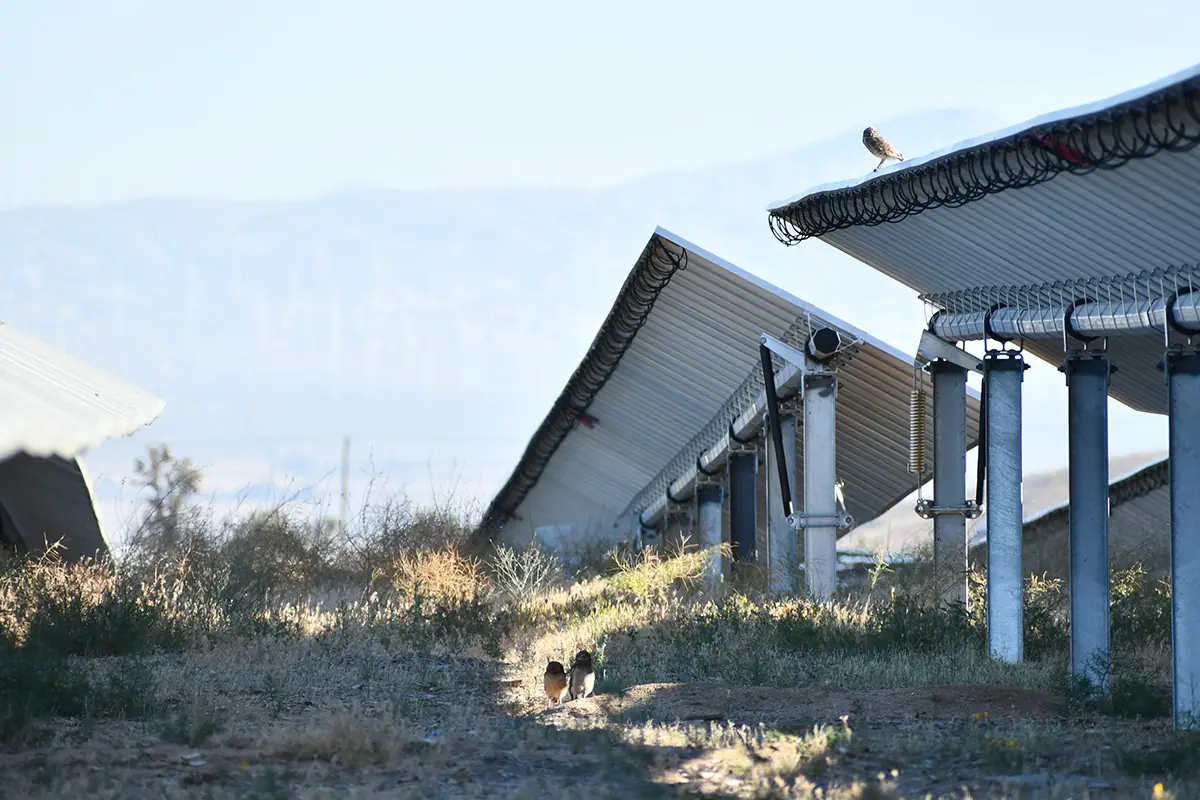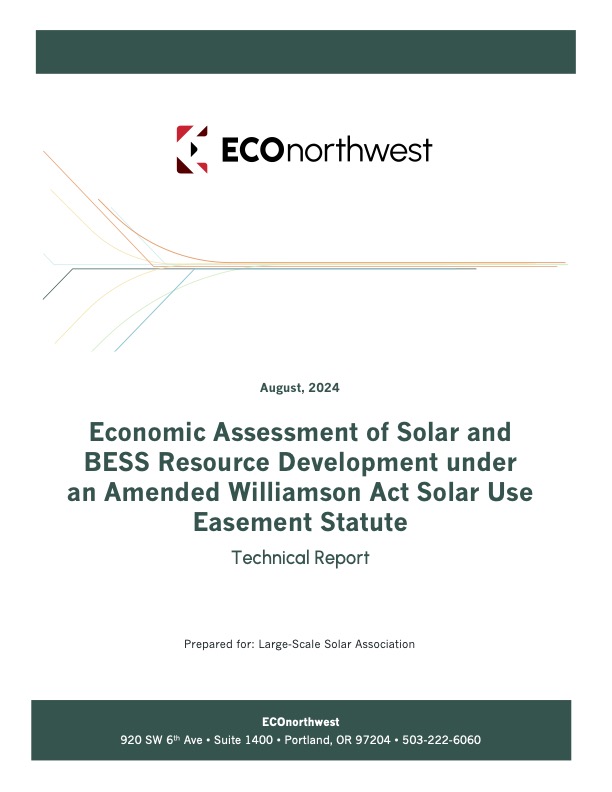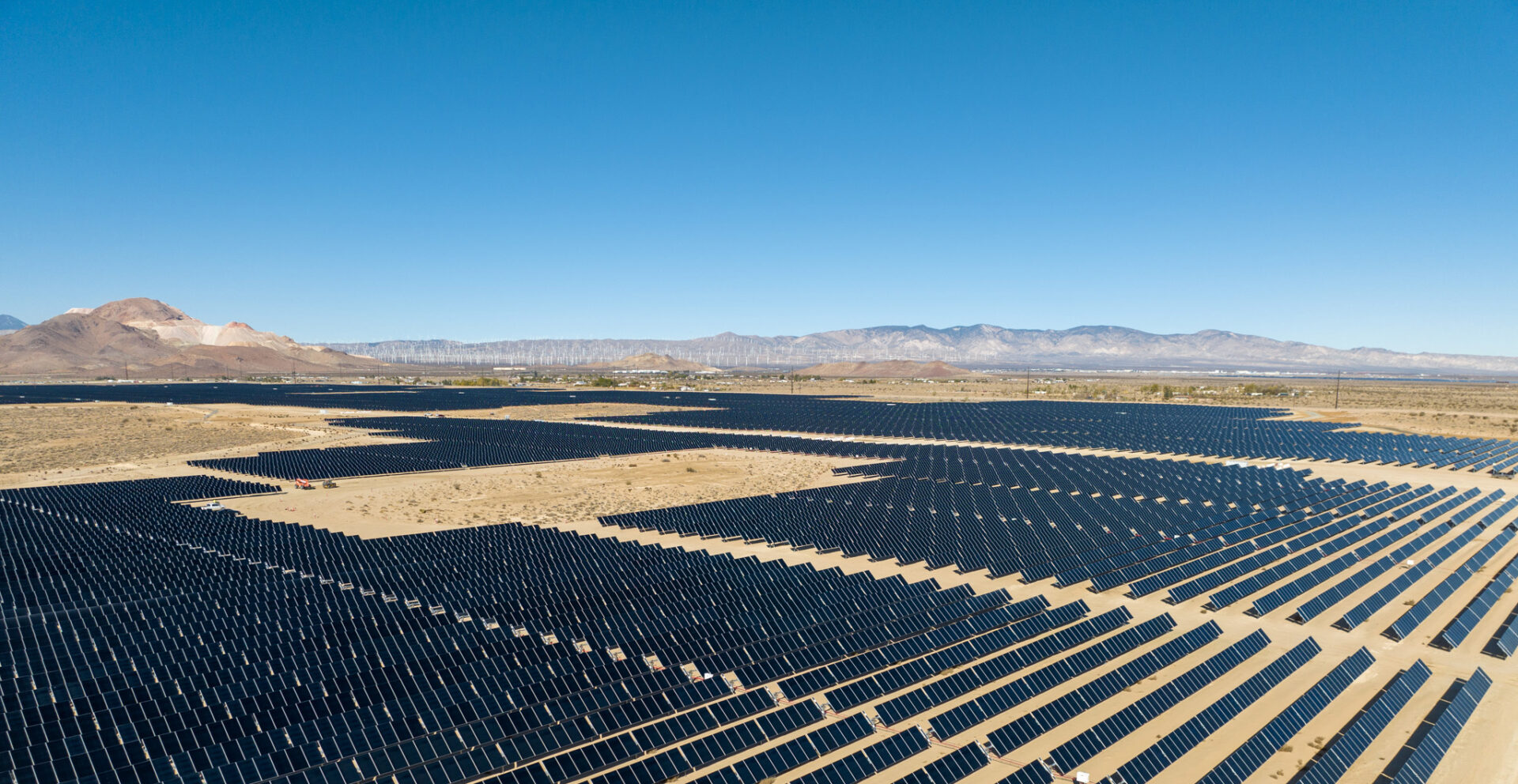LSA and its member companies are committed to addressing the climate imperative with well-sited and cost-effective solar projects and natural resource protections. Well-sited solar creates jobs, tax revenues, community benefits, and environmental protections.
Access our detailed analyses of solar projects’ multiple benefits and find essential permitting approaches that can help to facilitate timely project approvals, while ensuring projects meet local, state, and federal standards. Additionally, learn how solar project mitigation enhances environmental sustainability by contributing to and creating permanently conserved habitats. LSA’s approach balances rapid project deployment with high compliance and conservation standards, supporting growth in the solar industry while fostering lasting ecological stewardship.
New Study on Positive Bird & Clean Energy Interactions
New research shows birds and solar PV facilities can coexist without issues. Bird mortality at solar PV facilities has been studied for more than a decade, and in a new study, researchers from Argonne National Laboratory have reviewed hundreds of hours of video footage from 7 facilities in 4 regions showing exactly zero bird collisions with solar PV panels. Previous conclusions regarding bird populations being at risk from the clean energy transition are debunked in the study linked below.
Journal Article: Lake Effect Hypothesis Study
Species Conservation – Western Burrowing Owl
In October 2024, the California Fish and Game Commission voted to move the western burrowing owl to candidacy status under the California Endangered Species Act. LSA and its member companies joined with other companies in the industry, research ecologists, and field monitoring biologists to prepare The Burrowing Owl Conservation Strategy. LSA is committed to avoiding and minimizing impacts to burrowing owls during the construction, operation, and decommissioning of utility-scale solar projects and to managing this infrastructure in a way that creates and enhances habitat where possible.
The Burrowing Owl Conservation Strategy is the result of a collaborative effort by companies within and beyond LSA, as well as research ecologists and field monitoring biologists. LSA member companies endorse the Strategy, and provide this document for regulators, subject matter experts, solar developers, and land managers for use both in guiding how solar projects will be built and operated in consideration of the burrowing owl and in collecting and consolidating data to benefit ongoing research. The Strategy is a living document that will be updated as new data becomes available. Companies may seek to codify the Conservation Strategy practices into their project development approaches.
The Burrowing Owl Conservation Strategy CA Fish and Game Commission Comment Letter
Accelerated Permitting Pathways – Incidental Take Permit (ITP) Application Template and Solar PV Energy Environmental Development (SPEED) Guidelines
LSA and its members developed a two-part permitting guide for utility-scale solar developers and wildlife regulators. The Guides are designed to help facilitate smart project siting and permitting that avoids, minimizes, and/or mitigates major wildlife and habitat conflicts. The Guides affirm the importance of frontloading permit applications with comprehensive information to help to facilitate shortened permit processing times.
Note: While the California Department of Fish and Wildlife (CDFW) has agreed to accept applications using this template, CDFW is not requiring its use nor is CDFW agreeing that the template will necessarily include all of the information ultimately needed for the Department to issue an ITP for the Project.
SPEED Guidelines ITP Application Template
Economic Benefits – Job Creation & Local Revenue
Large-scale solar development can bring jobs, tax benefits, and overall economic uplift to communities where projects are built. This study by ECOnorthwest analyzes the future benefits utility-scale solar and battery energy storage system development can bring to the San Joaquin Valley under a modified Solar Use Easement statute. This would allow for the development of solar energy on water-scarce agricultural lands in California without requiring the cancellation of Williamson Act contracts.
ECOnorthwest Technical Report
